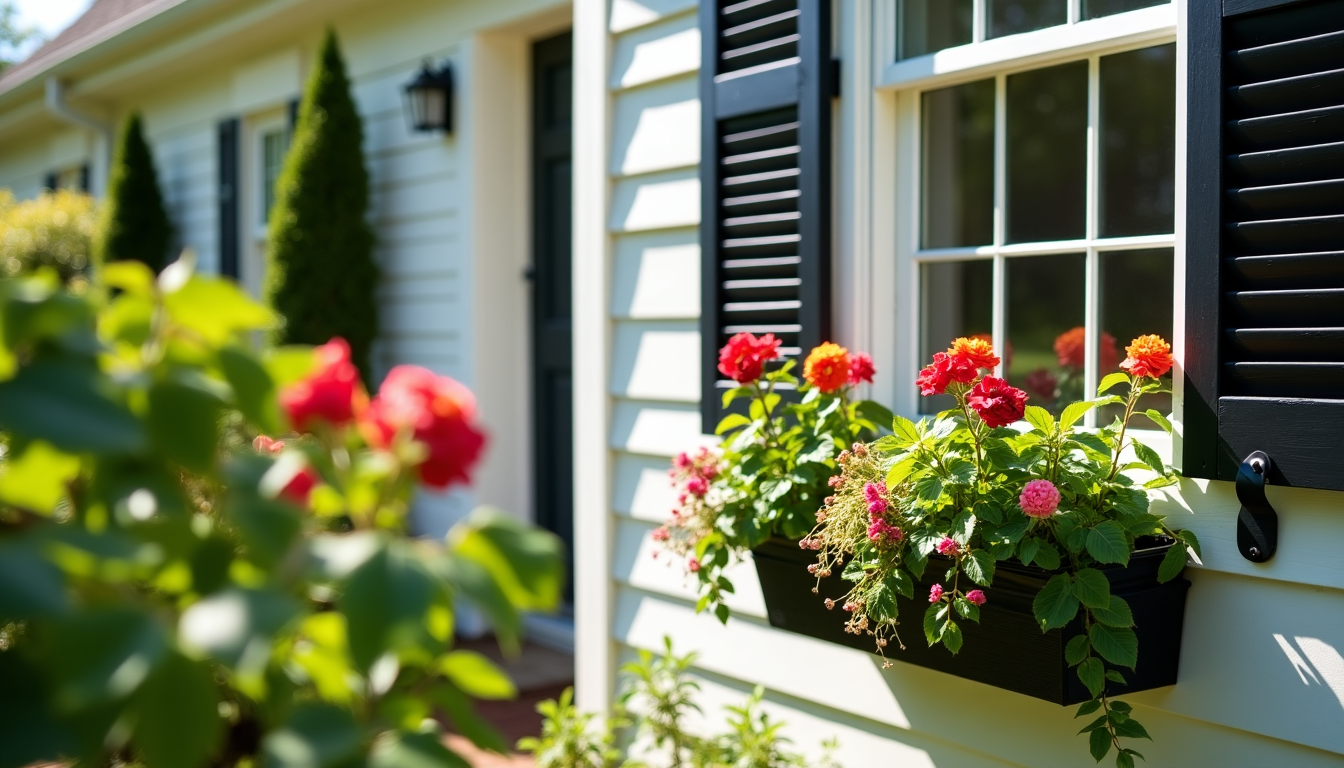How to Choose the Best Brackets for Window Boxes: A Comprehensive Guide

Window boxes bring charm and beauty to homes. Their safety and stability rely on proper support. The right brackets for window boxes is a vital choice that impacts both security and how long these decorative features last. Your window box brackets need professional installation to keep these beautiful additions secure all year round.
Picking the right brackets needs you to think about several things. Material strength matters. So does the mounting style and weight capacity. This piece gets into different types of window box mounting brackets and material choices. You’ll learn about brackets for flower boxes and proper mounting techniques. We’ll cover everything in choosing the perfect window bracket system that fits your needs.
Types of Window Box Brackets
Window box mounting brackets now come in designs of all types that match different installation needs and priorities. The market features several key categories of brackets for window boxes that serve specific purposes in different installation scenarios.
These are the main types of window box brackets you can find:
- Wall Mount Brackets: Traditional shelf-style brackets attach directly to walls and provide stable support
- Deck Rail Brackets: Brackets built specifically for wooden deck railing mounts
- Adjustable Brackets: Brackets with variable width settings that fit different planter sizes, typically ranging from 6 to 12.5 inches in depth
- Balcony Brackets: Strong, heavy-duty options built for balcony installations
- Decorative Brackets: Brackets that focus on visual appeal rather than structural support and boost curb appeal
You’ll find both functional and decorative options in the market. Prices start at $7 for simple PVC hardware and go up to $60 for premium stainless steel balcony brackets. Adjustable bracket systems let you customize the fit for planters of different sizes and mounting needs.
Manufacturers have developed specialized mounting solutions that include rail mounting kits with standard 6.75-inch planter brackets. Universal bracket pairs work well for multiple applications. Some brackets come with stronger bottom support built for balconies, fences, and gardens that ensures maximum stability and security.
Material Considerations
Material choice plays a vital role in window box brackets’ longevity and performance. Wrought iron brackets stand as a traditional choice that provides strong support with classic esthetics. Stainless steel brackets resist corrosion exceptionally well, and premium versions are priced at $60 for balcony installations.
Copper brackets excel in wet conditions because they naturally fight corrosion as time passes. These brackets cost more but their distinctive appeal catches the eye of homeowners’ associations and historical societies.
Budget-conscious buyers have several practical options:
- PVC brackets: Starting at $7 for basic hardwarethat needs no maintenance
- Galvanized options: Weather-resistant at mid-range prices
- Composite materials: Durable and budget-friendly
Wooden brackets add natural beauty but need regular upkeep to avoid deterioration. A smart alternative comes in the form of faux brackets made from PVC. These brackets look like traditional materials yet stand up better to weather and last longer.
Many manufacturers now produce heavy-duty iron brackets with improved bottom support features. These brackets work perfectly in outdoor settings like balconies and fences. Their strong design ensures stability without sacrificing visual appeal.
Factors to Consider When Choosing Brackets
You need to think over several factors when choosing brackets for window boxes, especially weight capacity and support needs. Quality brackets should offer solid support, and many modern designs can hold up to 88 pounds.
The length of the window box determines the number of brackets needed:
- For boxes up to 48 inches, one pair of brackets is sufficient
- Boxes between 54-72 inches require two pairs of brackets
- You’ll need extra supports every 16 inches for containers longer than 72 inches
Proper bracket spacing plays a vital role in providing optimal support. Your brackets should be no more than 24 inches apart. A window box’s ideal height should be 20-25 percent of your window’s height to create the right visual balance.
Brackets need strategic positioning relative to drainage holes to last longer. Water damage and rust can occur if you place brackets right under drain holes. Hot climate gardens benefit from larger boxes that hold moisture better and let you grow different types of plants.
Deep boxes work best for perennial plants since their roots grow more extensively than annuals. Your window boxes need regular checks, especially when they face south or west. These spots get direct sunlight that dries soil quickly.
Installation Tips and Best Practices
A secure window box bracket installation ensures safety and stability that lasts. Homeowners need the right tools and materials to mount these brackets properly.
Essential Tools for Installation:
- Level tool to arrange accurately
- Drill with appropriate bits
- Measuring tape
- Screwdriver
- Safety equipment (glasses, gloves)
Surface preparation starts the installation process. Brackets can support up to 12 pounds of weight per hook on vinyl siding installations. Solid surface mounting needs 3-inch galvanized decking screws. These screws should attach to solid wood window frames instead of trim.
Follow these steps to install:
- Mark mounting locations 1 inch below the windowsill
- Use a level to arrange properly
- Drill pilot holes into marked locations
- Install brackets with appropriate screws
- Test stability before adding the window box
Masonry surfaces need specialized anchors to support properly. Vinyl siding installations require at least two hooks per window box. The French cleat mounting system gives a floating appearance and provides resilient support.
Important Safety Considerations: Regular checks help maintain stability. You should apply caulk around bracket edges to stop water from getting in. Make sure all mounting hardware stays tight and secure.
Brackets should sit away from drainage holes to prevent wear. The setup should let you remove the box easily to handle seasonal maintenance and plant care.
Conclusion
You just need to pay attention to several key factors when picking the right window box brackets. Material durability, weight capacity, and installation requirements will determine your success. Quality brackets are the foundations of stunning window box displays. They protect your structure and plants in all weather conditions. A professional installation paired with the right bracket choice will improve your home’s looks while you retain control of safety.
Window box brackets are a most important investment in your home’s beauty and safety. Smart choices here are vital for success down the road. Your brackets will last longer and work better with routine checkups, correct spacing, and solid mounting methods. Homeowners who think over their unique needs, building style, and local weather patterns create beautiful window boxes. These additions bring lasting charm and boost property values.
FAQs
- Should window boxes be the same width as the windows?
Window boxes typically look best when they match the width of the window they are under, although there are some exceptions. Standard window lengths like 30-inch and 36-inch are commonly available to fit most traditional-style uPVC windows, which are usually around three feet long. - What is the best way to secure a window box?
To ensure your window box remains securely in place, use metal brackets to attach it firmly to the wall. Another method is to install eyelets into the wall and use strong wire or gardening string to tie the window box securely. - How can I prevent my window boxes from falling off?
Prevent window boxes from falling by securely fastening them. To extend the windowsill and stabilize the box, you can do this by bolting metal brackets directly to the wall. Alternatively, installing eyelets on either side of the window box and securing it with strong wire is also effective. - How far below a window should a window box be installed?
For double-hung or sliding windows, position the window box by measuring 1 inch below the windowsill on one side of the window frame and marking it with a pencil; this marks the top of the bracket. For windows that swing outward, measure and mark 6 to 8 inches below to ensure adequate clearance.

